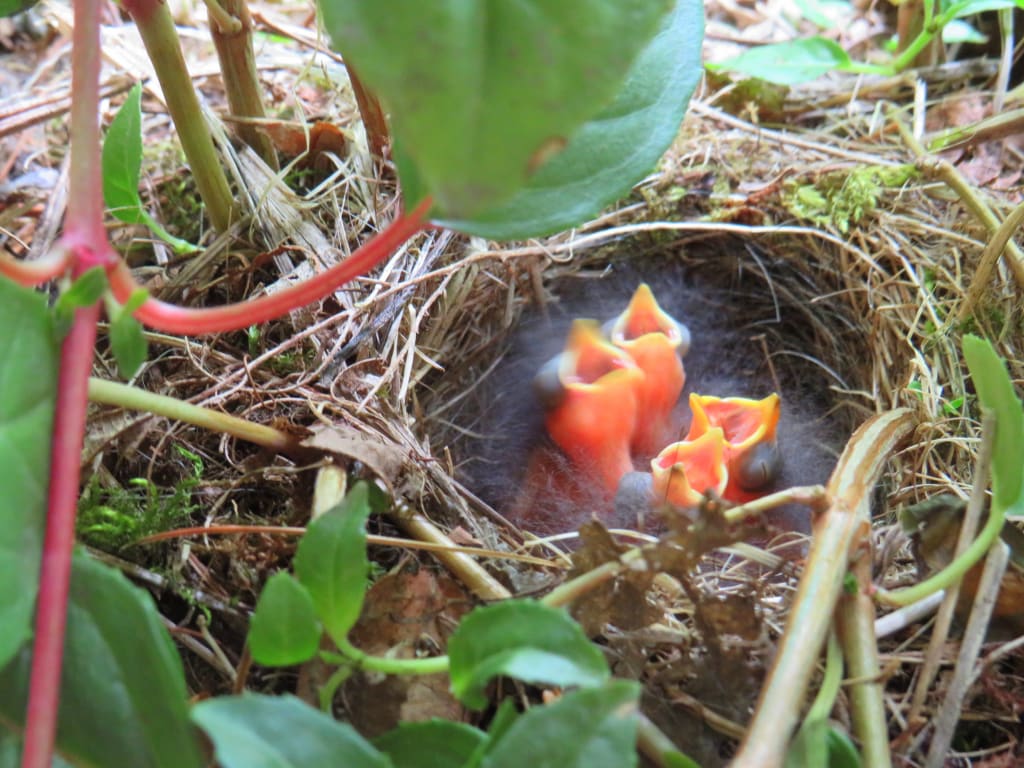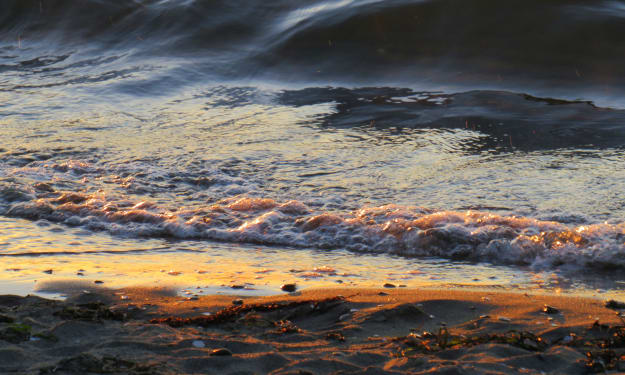
Four Hungry Mouths!
Living on a forested acreage for the past forty years has given me numerous opportunities to observe the quiet and sometimes noisy aspects of Nature! Since the arrival of the global pandemic restricting forays “away”, I have been delighted even more with a front row seat as the seasons cycle past. This Spring in particular, each intricate detail of every blossom amazed me. Watching the silent unfolding of buds into such glorious blooms is indeed a thrill to witness. But the living creatures that frequent my line of vision draw me outdoors every day. Because our trees offer safety, privacy, and an abundance of food, our lands have become home to squirrels, raccoons, coyotes, skunks, rabbits—and just hundreds of birds.
So, I’ll focus on birds today—and there are MANY! My camera is always at the ready when I walk the trails along our creek or its banks. Hedges, shrubs, and the persistent blackberry bushes rustle with winged movement of birds, butterflies, and bees. Robins, northern flickers, wrens, nuthatches, finches, woodpeckers, jays, crows, and more fill the air with their song, squawk, trill, or warble each day. Occasionally, and especially each autumn, when spawning salmon pairs swirl in the eddies of our stream, eagles, herons, and cranes come fishing! And we have owls. Most of my sightings (and photos) are of the barred owl species, but I have heard the “rusty-hinge” call of the screech owl and the hiss of a barn owl. Resident barred owls continue to draw our attention during mating, nesting, and launching of their hatch each year. Heeding the varied and multiple notes of their “conversations” has allowed me to add abundantly to my photo collection. But owls are curious and great posers, so it is not difficult to capture them with a lens!
It’s a different story with the flighty backyard visitors though. We do not have a bird feeder, but rather leave the birds to forage as Nature intended. I’ve been watching a pair of Dark-eyed Juncos swooping into my fuchsia hanging basket. Together they deposit tiny bits of grass and twigs from their bright yellow beaks, then repeat the exercise over and over! The male has a darker hood over his head, but the female looks quite attractive too. As mates they work together well. I don’t want to interrupt the cycle so just observe the process from either the kitchen or my office window. A few days later when the activity has slowed somewhat and the female is spending more time in the leafy plant, I do take a peek. Four bluish speckled eggs lie in the fuzz-lined nest. When I snap a quick shot with my phone, momma is nearby scolding me with a ”tsk, tsk, tsk”! I check in my bird manual. I have twelve days to wait. I wait.
It’s Mother’s Day, so I decide it would be an appropriate date to check on momma Junco and see how her brood is faring. This time I want to use my larger camera. I get my husband to hold the step-ladder steady as I climb to the top. With one hand holding the ladder, with the other he separates the petals, revealing four hatched, but very naked fledglings. Their dark eyes bulge from their tiny heads and their orange mouths open in unison as I imitate momma’s voice! I carefully draw my camera up to the nest focusing on the open mouths…I press the shutter. Satisfied with my shot, I quickly leave my roost and let momma return to her ongoing task of filling those hungry beaks! But poppa assists in this phase too. Considering that the food source is mainly seeds and caterpillars, it takes numerous trips to appease the appetites of their growing offspring.
My manual tells me that it will only be another week or so before the Junco chicks leave the nest! I can hardly believe they will have feathers enough to cover their wings by then—let alone fly! But, as it seems with these feathered vertebrates, growth happens in fast forward mode. These little ones will stay nearby their parents for less than a month and then be on their own. It’s not a life of leisure for the adults though, they will have two more clutches to raise this year and ALL of those will be breeding by next year! And so the cycle goes…I count it a real privilege to live so close to Nature, daily witnessing its miracles.
About the Creator
Enjoyed the story? Support the Creator.
Subscribe for free to receive all their stories in your feed. You could also pledge your support or give them a one-off tip, letting them know you appreciate their work.





Comments
There are no comments for this story
Be the first to respond and start the conversation.